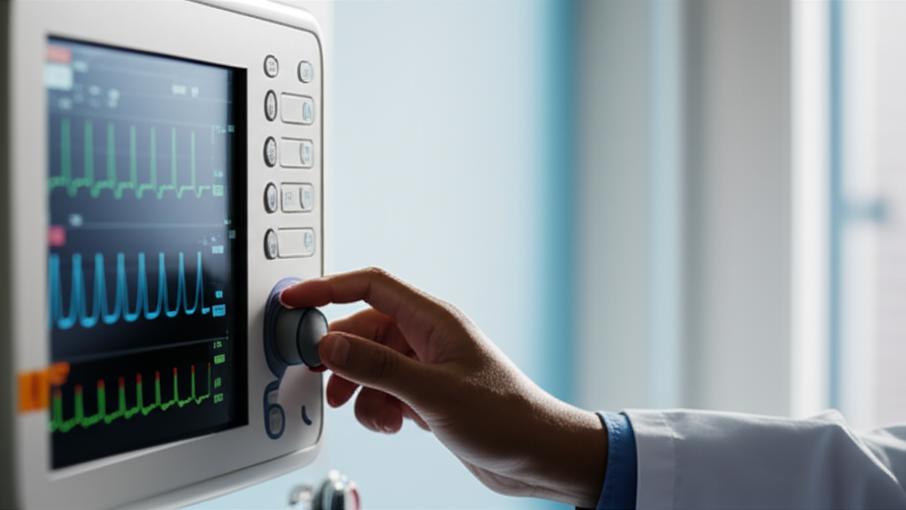I Remember standing by a patient’s bedside in the ICU, the rhythmic beeping of the monitors the only sound in the room. Their heart, a powerful muscle that had served them for decades, was struggling. It was tired, failing to pump enough blood to the rest of the body. In these critical moments, we turn to a special class of medications. We needed to give the heart a helping hand, a bit more strength to do its vital job. This is where powerful drugs called inotropes come into the picture. They are essential tools for managing the heart’s pumping force.
What Are Inotropes, Really?
Think of inotropes as messengers that tell your heart muscle how hard to squeeze. It’s a bit like a volume control for the power of your heartbeat. They work directly on your heart’s muscle cells, which we call cardiomyocytes.
We divide them into two main groups:
- Positive Inotropes: These are the “power-up” medications. They tell your heart to beat with more force. We use these when the heart is too weak to pump the blood your body needs, a situation we often see in severe heart failure or shock. The goal is to boost the cardiac output—the amount of blood the heart pushes out with each beat—to get vital oxygen to your organs.
- Negative Inotropes: These are the “power-down” medications. They tell your heart to beat with less force. This might sound strange, but it’s incredibly helpful when the heart is working too hard, such as with high blood pressure, certain types of chest pain (angina), or irregular heart rhythms (arrhythmias).
It’s all about finding the right balance for your specific situation. Sometimes the heart needs a boost, and other times, it needs to be told to slow down and relax a bit.
Understanding the Different Types of Inotropes
There are quite a few different drugs in this family, each with a specific job. Here’s a quick look at some of the common ones you might hear about.
| Type of Inotrope | Common Examples | Primary Use |
|---|---|---|
| Positive Inotropes (Increase Heart’s Pumping Power) | ||
| Catecholamines | Dopamine, Dobutamine, Epinephrine, Norepinephrine | Used in emergencies like cardiogenic shock, septic shock, or after major heart surgery. |
| Phosphodiesterase Inhibitors | Milrinone, Amrinone | Often used for advanced heart failure. |
| Cardiac Glycosides | Digoxin | A much older, oral medication for long-term heart failure and certain arrhythmias. |
| Negative Inotropes (Decrease Heart’s Workload) | ||
| Beta-Blockers | Atenolol, Metoprolol | Treats high blood pressure, angina, and prevents future heart attacks. |
| Calcium Channel Blockers | Verapamil, Diltiazem | Used for high blood pressure, angina, and abnormal heart rhythms. |
| Antiarrhythmics | Flecainide, Disopyramide | Specifically used to control irregular heartbeats. |
When and Why Are They Used?
The setting for using these two types of drugs is usually worlds apart.
Positive inotropes are almost always given in a hospital, typically in the ICU. They are powerful, fast-acting drugs delivered through an IV. We use them for life-threatening situations like:
- Cardiogenic shock: When the heart suddenly can’t pump enough blood.
- Septic shock: When a widespread infection causes dangerously low blood pressure.
- Severe heart failure that isn’t responding to other treatments.
- Support after open-heart surgery.
- Major trauma or allergic reactions.
During this time, you’d be monitored incredibly closely. We watch your heart rhythm, blood pressure, and fluid levels constantly.
Negative inotropes, on the other hand, are usually part of a long-term treatment plan. You’d likely take these as a daily pill at home to manage chronic conditions like:
- High blood pressure
- Angina (chest pain)
- Arrhythmia (abnormal heart rhythm)
- Hypertrophic cardiomyopathy (a condition where the heart muscle becomes abnormally thick)
Potential Side Effects and Risks
Like any medication, inotropes come with potential side effects. Because they directly affect your heart, we take these very seriously. The risks depend on whether you’re taking a positive or negative inotrope.
| Drug Type | Common or Serious Side Effects |
|---|---|
| Positive Inotropes |
|
| Negative Inotropes |
|
It’s important to remember that for positive inotropes, we’re often using them because the alternative is much worse. We always use the lowest effective dose for the shortest time possible. For negative inotropes, side effects are often manageable, and we can adjust doses or change medications if they become a problem.
What to Expect with Recovery
If you’ve been in the hospital on a positive inotrope, recovery takes time. As your heart gets stronger, your doctor will slowly wean you off the medication. For some people with end-stage heart failure, they may need to continue inotropes at home while waiting for a heart transplant or as part of their comfort care.
If you’re taking negative inotropes at home, this is likely a long-term commitment to keep your heart stable. It’s crucial to take them as prescribed and to let your doctor know if your symptoms aren’t improving or if you’re having bothersome side effects. We can always work together to find the right fit for you.
Take-Home Message
- Inotropes are medications that change the force of your heart’s contractions.
- Positive inotropes make the heart beat stronger and are used in critical situations like severe heart failure or shock.
- Negative inotropes make the heart beat with less force, helping to manage conditions like high blood pressure and angina.
- Positive inotropes are typically given in an ICU, while negative inotropes are often taken as daily pills at home.
- Always talk to your doctor about any side effects you experience or if your symptoms return. We are here to help you manage your condition.
Navigating heart health can feel overwhelming, I know. But whether it’s an emergency or a long-term plan, please know that you’re not alone in this. We have tools to help, and we’ll walk this path with you.


